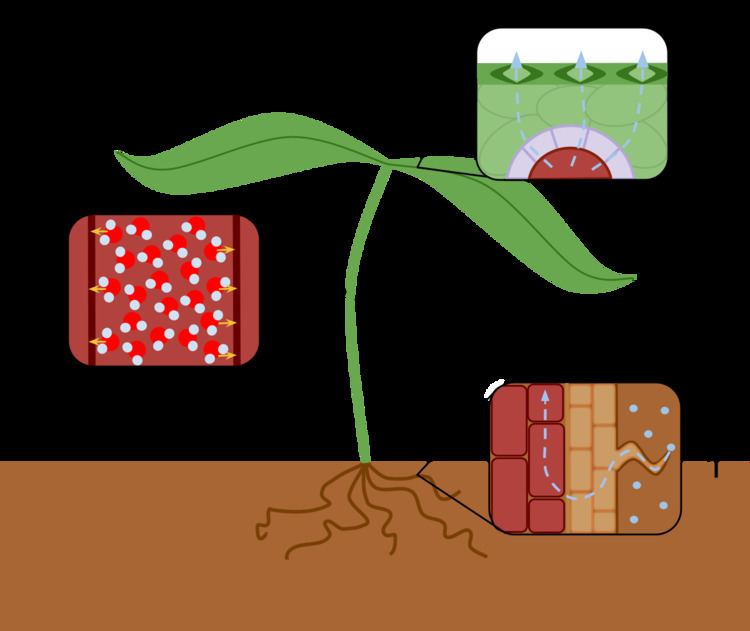 | ||
In plants, the transpiration stream is the uninterrupted stream of water and solutes which is taken up by the roots and transported via the xylem to the leaves where it evaporates into the air/apoplast-interface of the substomatal cavity. It is driven by capillary action and in some plants by root pressure. The main driving factor is the difference in water potential between the soil and the substomatal cavity caused by transpiration.
Contents
Transpiration
Transpiration can be regulated through stomatal closure or opening. It allows for plants to efficiently transport water up to their highest body organs, regulate the temperature of stem and leaves and it allows for upstream signaling such as the dispersal of an apoplastic alkalinization during local oxidative stress.
A very quick summary of this is:
Osmosis
The water passes from the soil to the root by osmosis. This is helped by the root hairs’ shape – as they are long and thin, they maximize the surface area, meaning that more water can enter into the root hairs than if their surface area were smaller. There is greater water potential in the soil than in the cytoplasm of the root hair cells. As the cells surface membrane of the root hair cell is semi – permeable, osmosis can take place; and water passes from the soil to the root hairs. The next stage in the transpiration stream is water passing to the xylem vessels. The water either goes through the cortex cells (between the root cells and the xylem vessels) or it bypasses them – going through their cell walls. After this, the water moves up the xylem vessels to the leaves through diffusion: A pressure change between the top and bottom of the vessel. Diffusion takes place because there is a concentration gradient between water in the xylem vessel and the leaf (as water is transpiring out of the leaf). This means that water diffuses up the leaf. There is also a pressure change between the top and bottom of the xylem vessels, due to water loss from the leaves. This reduces the pressure of water at the top of the vessels. This means water moves up the vessels. The last stage in the transpiration stream is the water moving into the leaves, and then the actual transpiration. First, the water moves into the mesophyll cells from the top of the xylem vessels. Then the water evaporates out of the cells into the spaces between the cells in the leaf. After this, the water leaves the leaf (and the whole plant) by diffusion through stomata.
